Blog Posts
Difference Between Zoas and Palys
Zoas Versus Palys: What’s the Difference?
Zoas? Zoanthids? Palythoas? Palys? No matter what you call them, Zoas and Palys are great for adding a splash of colour to any tank and many consider a reef tank
without them to be incomplete! So what are the differences between these two closely related corals? Are their care requirements different or are the differences merely
cosmetic? Is one a better choice than the other for your reef tank? Let’s take a deep dive into these two classic reef tank corals.
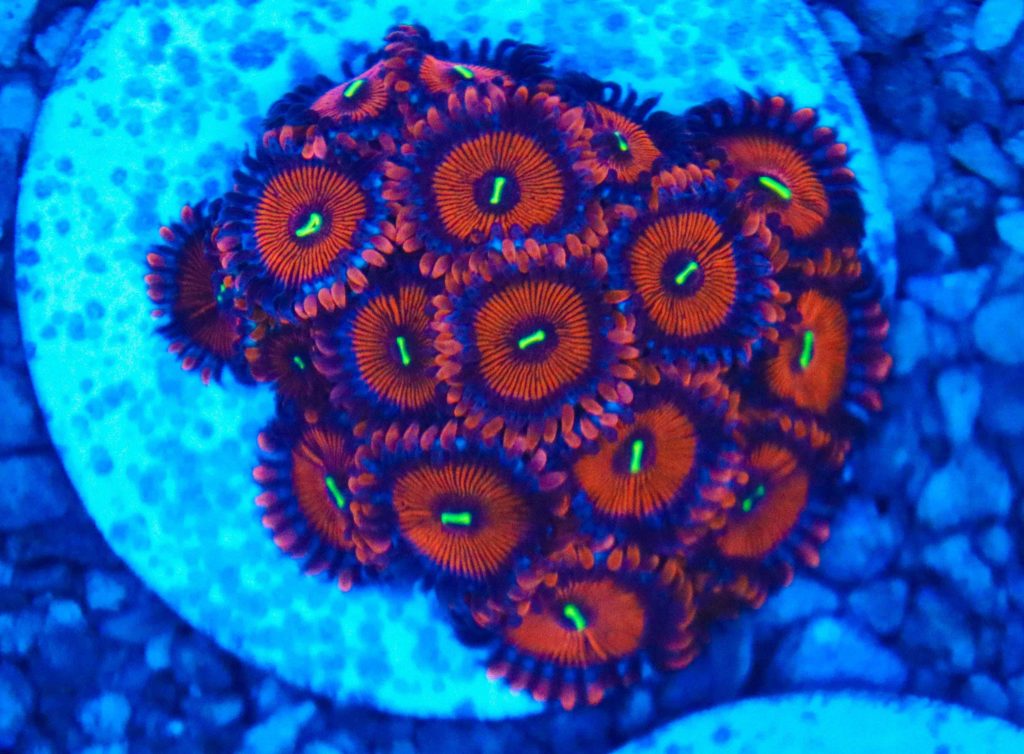 A textbook example of paly – the red people eater palythoa
A textbook example of paly – the red people eater palythoa
Zoas and Palys are both colonial corals with members of a single colony generally having identically coloured polyps connected by a fleshy stolonal network. This network allows the colony to share nutrients and possibly even for individual polyps to “communicate” with each other. Both Zoas and Palys have a fairly fast growth rate and reproduce by budding rather than by splitting. This means that colonies can grow exponentially. It is probably a good idea to isolate both types on individual rock islands to prevent them from overtaking the main rockwork. If you want to create a Zoa or Paly garden, a frag holder in the shape of a rock (https://fragbox.ca/product/frag-plug-rock- holder/) is an excellent choice. The frag will quickly grow to cover the entire rock.
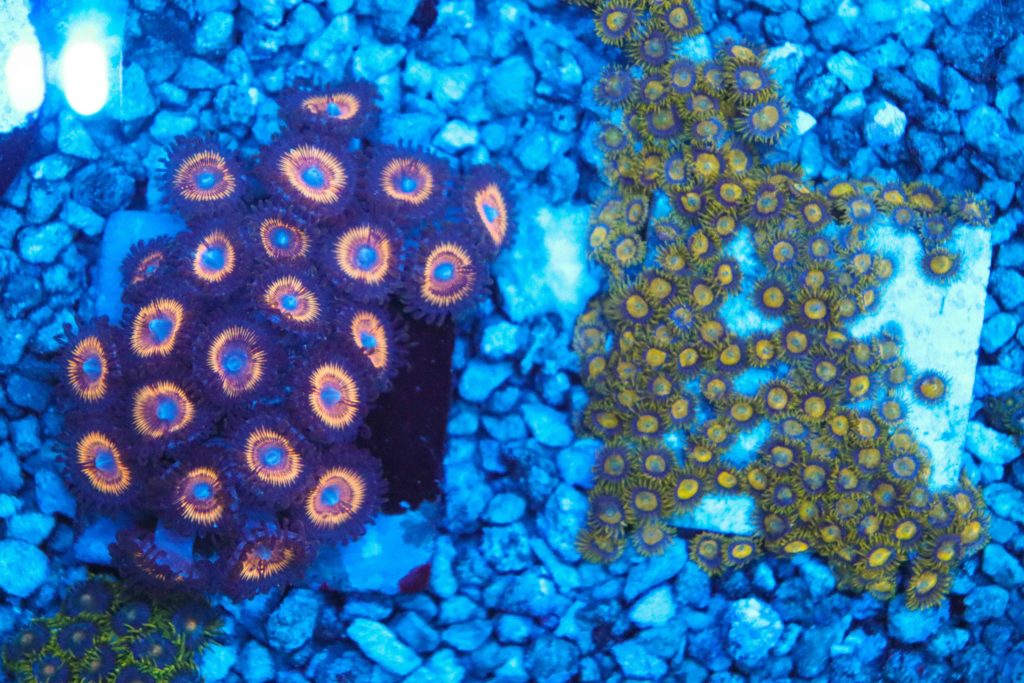
Peach palys on the left vs king midas zoas on the right
Because Zoas and Palys do not have any sting, different colonies of either can be placed together without worrying about coral warfare. Both Zoas and Palys are
available in countless custom colour morphs and some hobbyists focus almost exclusively on collecting the rarest and most striking specimens.
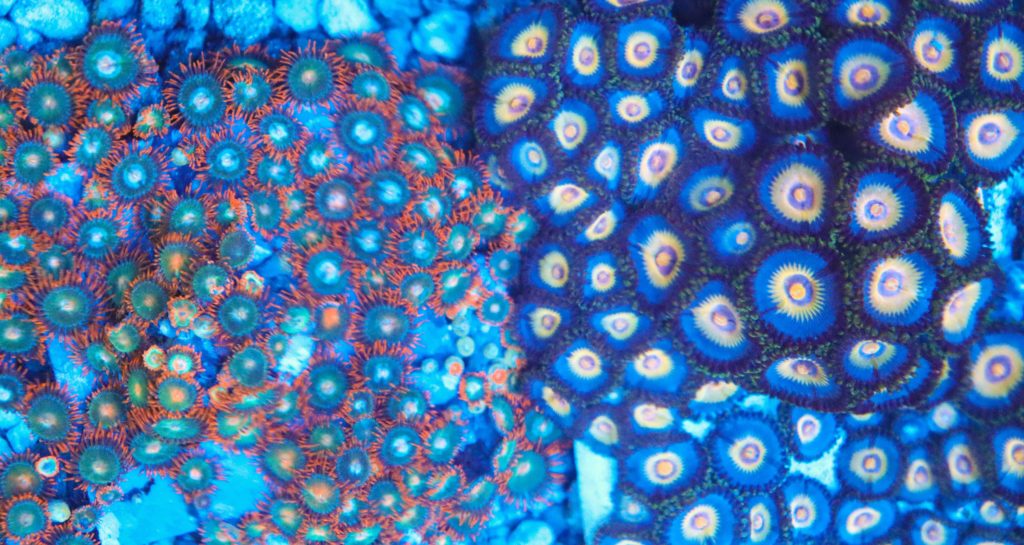
Palys on the right zoas on the left
So what makes a Zoa a Zoa and a Paly a Paly? The two easiest ways to tell them apart are the size of the polyps and the length of the stems. Generally speaking, Zoas have smaller heads that grow very closely together and Palys have larger heads that may be spaced slightly further apart. One of the other significant differences between the two species is the length of the stalks. Zoas tend to grow directly against the rock and create a carpet-like appearance, whereas Palys tend to have longer stalks and grow out from the rock.
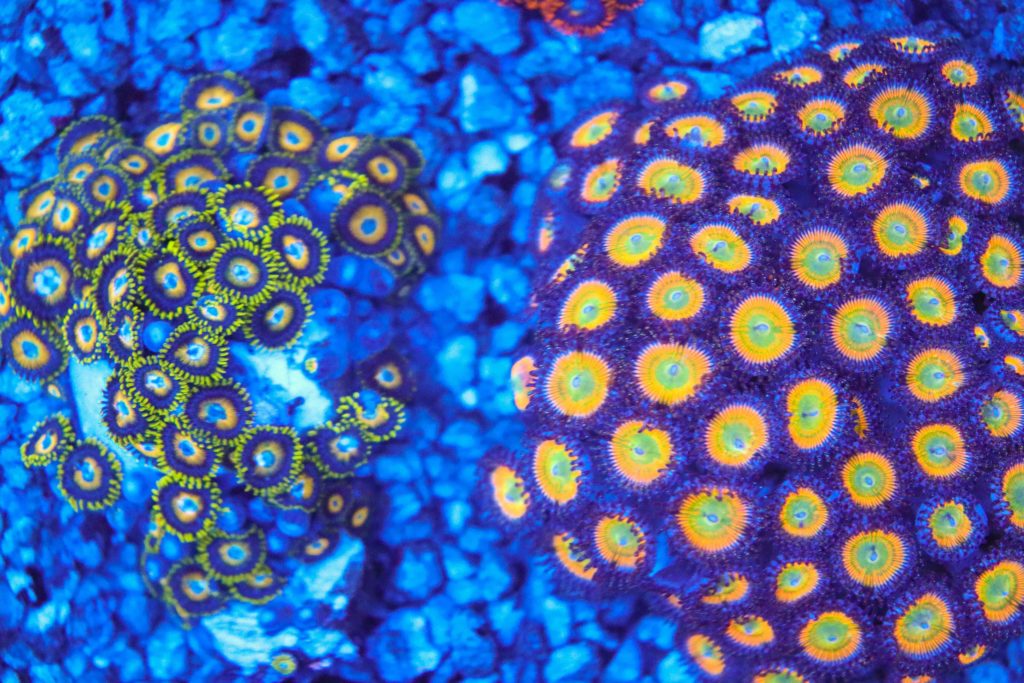
Sunny D palys on the right , scrambled egg zoas on the left
This means that Palys tend to sway as a result of water movement, while Zoas generally do not. In fact, if a Zoa colony is showing significant movement your flow is probably too high! Some hobbyists think that Zoas tend to be brighter than Palys but this is highly subjective. In terms of care requirements, both Zoas and Palys prefer moderate to low levels of light and waterflow. They also will both tolerate, and may even prefer, higher levels of nitrate than other coral species. Both species also respond well to target feeding of dissolved foods, but this is not generally necessary. Just remember to turn off your pumps so that they have a chance to eat without the food being blown away.
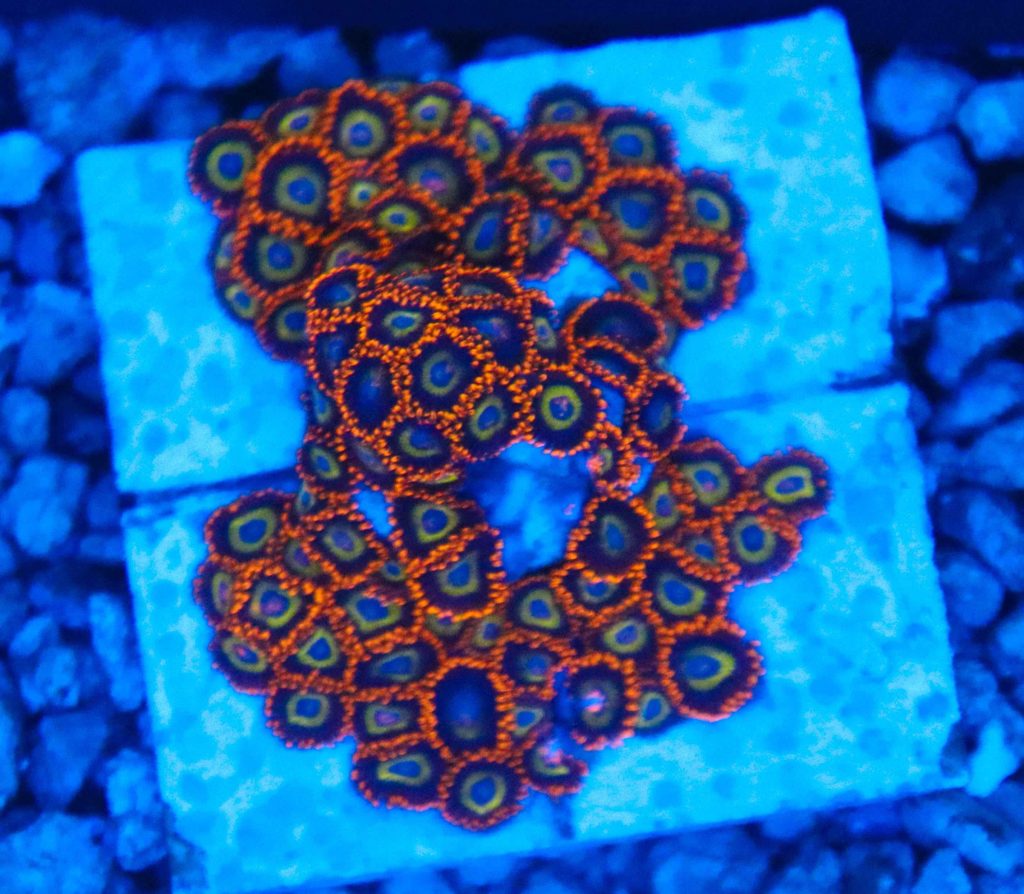
A text book zoanthid example – fruit loops zoas
Neither Zoas or Palys have any sort of sting so multiple colonies can be placed next to each other without any issues. However, some species of Zoas and Palys contain a toxin that can be harmful, so it is a good idea to wear gloves and eye protection when handling them out of the tank. With so many striking colours available Zoas and Palys are an easy to keep and economical way of adding a wide variety of colours to any home aquarium.
